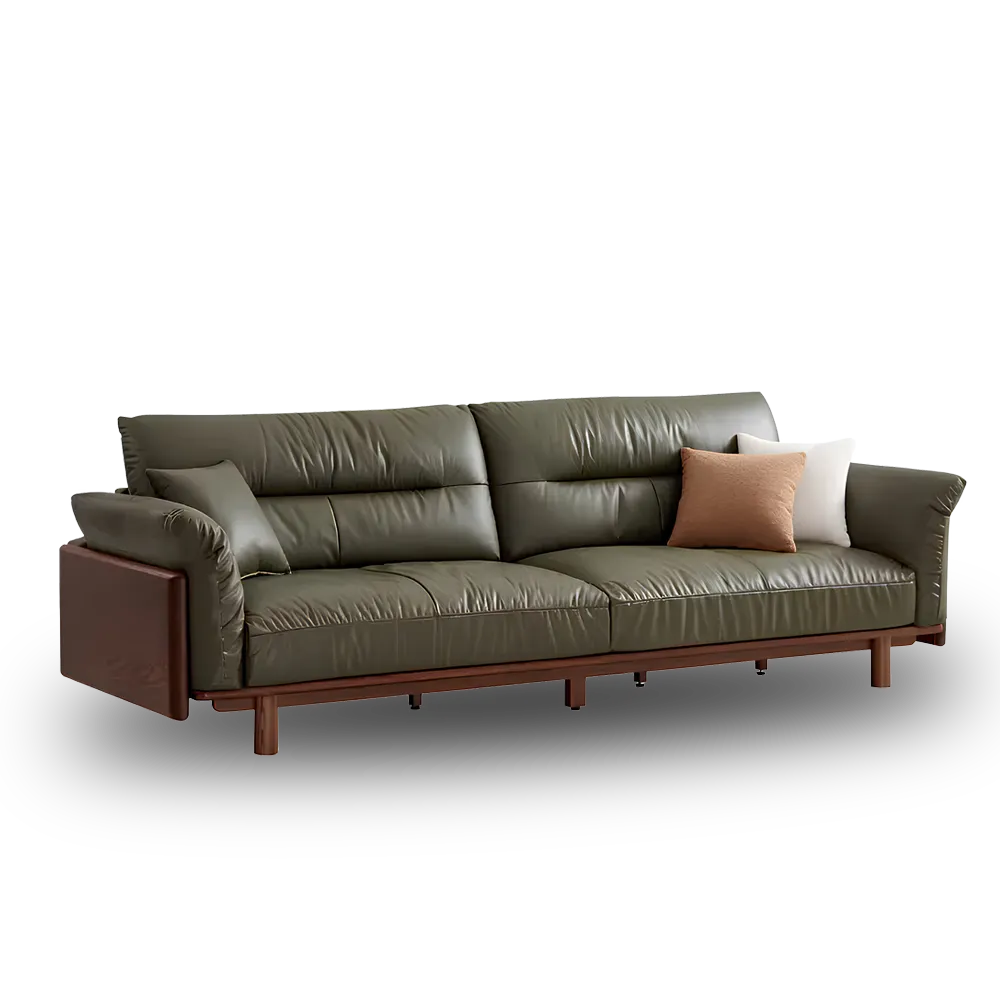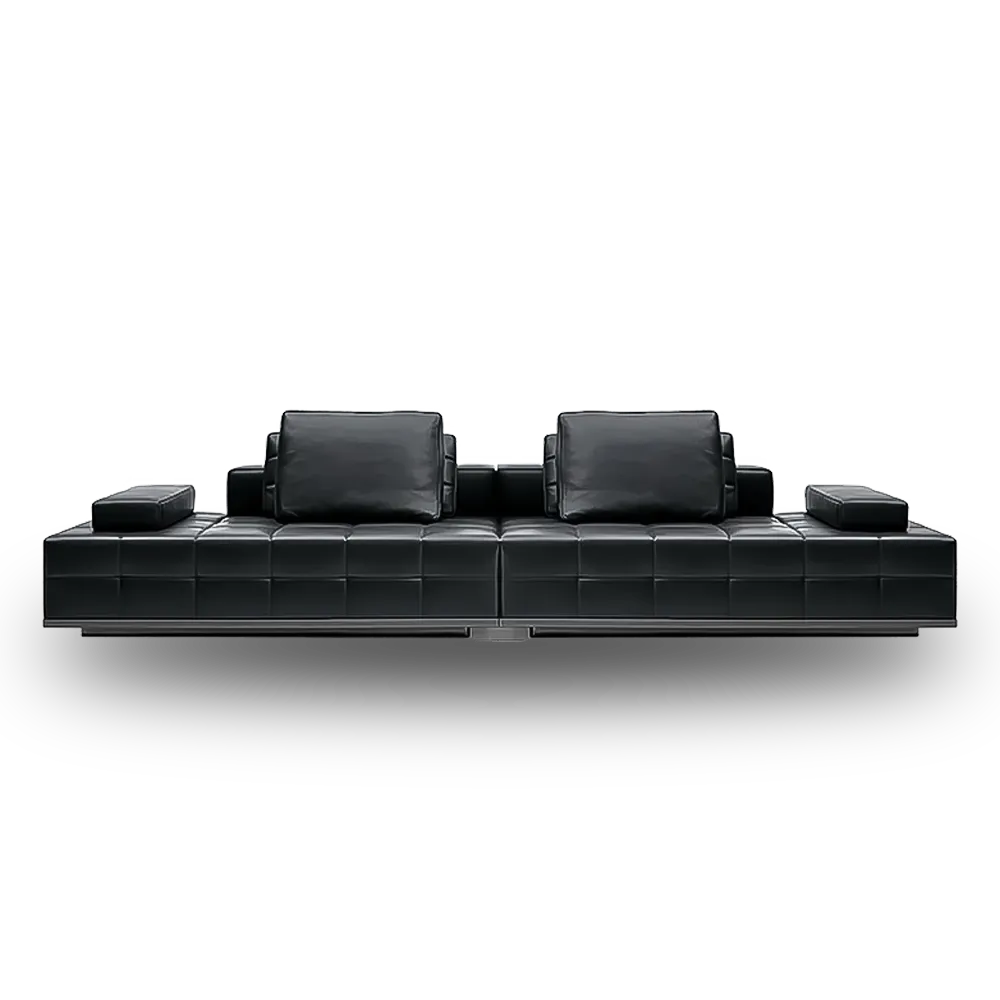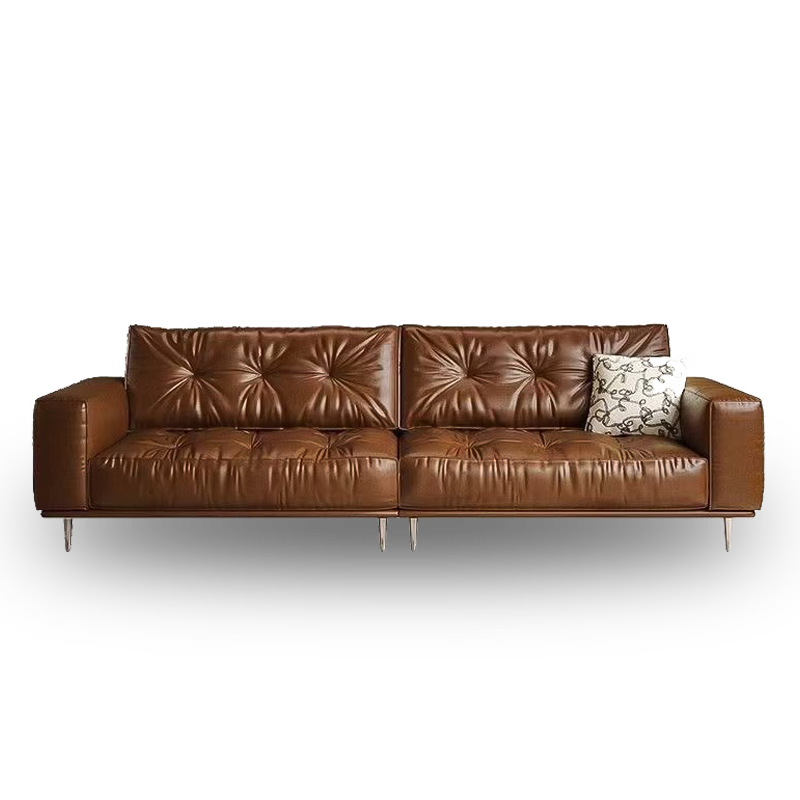In the private and cozy space of a bedroom, a sofa is not only a comfortable spot for resting and sitting, but also an important element that enhances the quality of life. However, due to the special usage scenarios of bedroom sofas, they are inevitably prone to dust, hair, and even occasional beverage spills. Therefore, cleanliness and material maintenance have become core considerations when purchasing. If you want to choose a bedroom sofa that is both comfortable and easy to maintain, you may wish to carefully consider the following aspects.

Starting from Cleanliness, Lock in High-Quality Materials
Sofas of different materials vary greatly in terms of cleaning difficulty. When choosing, you need to weigh according to the actual usage of the bedroom.
Technology fabric sofas can be called “top students” in the field of cleaning. Their surface has a leather-like texture but with the breathability of fabric, and most importantly, they have excellent water and stain resistance. For daily dust, you only need to vacuum it lightly or wipe it with a dry cloth; if you accidentally spill a drink, promptly wipe it with a damp cloth dipped in a small amount of neutral detergent, and the stain can be easily removed without leaving water marks. However, it should be noted that avoid using strong corrosive cleaners such as alcohol and gasoline to prevent damage to the waterproof coating on the surface.
Leather sofas (especially those made of cowhide or buffalo hide), although they have a high-end feel, require more care when cleaning. For minor stains, you can gently wipe with a semi-dry soft cloth dipped in a special leather cleaner, then blot the moisture with a dry cloth to prevent moisture from penetrating into the leather and causing hardening or cracking. But leather sofas are afraid of scratches from sharp objects. Once damaged, the difficulty of cleaning and repairing will increase significantly, so they are more suitable for families who pursue texture and can take careful care of them.
Short-pile fabric sofas (such as cotton-linen blends and polyester fiber materials) are relatively easy to clean. Short piles are not easy to trap dirt. Dust and hair can be handled with a lint roller or the brush head of a vacuum cleaner; small stains can be locally wiped with a neutral laundry detergent solution, then wiped clean with water and dried. However, it should be noted that try to avoid machine washing such sofas to prevent shrinkage and deformation.
Long-pile and velvet sofas, on the other hand, are “difficult points” in cleaning. The long pile is easy to entangle dust and pet hair. When cleaning, a special long-haired brush must be used with a vacuum cleaner, and once the stain penetrates, it is difficult to completely remove. They are more suitable for quiet bedrooms without pets or children.
Pay Attention to Material Characteristics and Do Daily Maintenance Well
Choosing the right material is only the first step. Scientific maintenance can extend the service life of the sofa and keep it in good condition.
The key to maintaining technology fabric sofas is to protect the surface coating. Avoid prolonged exposure to sunlight to prevent the fabric from fading and aging; vacuum the dust in the gaps every week to prevent dust accumulation from affecting breathability; wipe the entire surface with a soft cloth dampened with water regularly (every 3-6 months) to keep the fabric fresh.
The maintenance of leather sofas requires “moisturizing”. You can apply a special leather care agent once a month to replenish the oil needed by the leather and prevent dryness and cracking; place it away from air conditioning vents and heating to avoid hardening or cracking of the leather due to sudden temperature changes; gently pat the sofa after sitting for a long time to restore the elasticity of the compressed leather and reduce wrinkles.
The core of maintaining fabric sofas is moisture and mite prevention. During the plum rain season, you can regularly open the bedroom windows for ventilation or use a dehumidifier to reduce indoor humidity to prevent the fabric from mildewing; every 2-3 months, you can remove the sofa cover (if detachable), machine wash it gently with neutral detergent, control the water temperature below 30°C, and put it back in time after drying to avoid fabric deformation due to excessive stretching.
In addition, for sofas of any material, avoid placing overheated items (such as hot water bags, electric heaters) on them to prevent the fabric from discoloring and deforming; try to avoid frequent friction on the same part during daily use to reduce fabric wear.
Combine with Bedroom Scenarios and Consider Practical Details
In addition to the cleanliness and maintenance of materials, the structural design of the sofa will also affect the convenience of cleaning. Choose styles with detachable sofa covers for more thorough cleaning; sofas with smaller gaps and rounder corners are less likely to trap dirt, making daily maintenance easier. At the same time, you also need to consider the size and decoration style of the bedroom. If the bedroom area is small, you can choose a simple single or double sofa to avoid increasing cleaning dead corners due to the oversize of the sofa.
In conclusion, when buying a bedroom sofa, you should not only be “struck by love at first sight” for its appearance and comfort, but also “think it through carefully” regarding its ease of cleaning and maintenance demands. Select the right material based on your living habits and ability to maintain it, and supplement with careful daily care. This way, the bedroom sofa can always stay clean and comfortable, becoming a lasting warm highlight in the bedroom.


